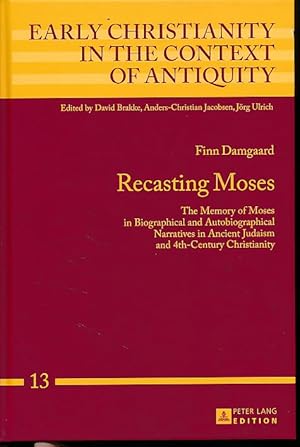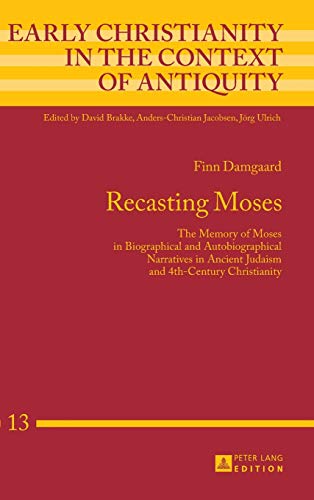recasting moses memory biographical von damgaard finn (4 Ergebnisse)
FeedbackSuchfilter
Produktart
- Alle Product Types
- Bücher (4)
- Magazine & Zeitschriften (Keine weiteren Ergebnisse entsprechen dieser Verfeinerung)
- Comics (Keine weiteren Ergebnisse entsprechen dieser Verfeinerung)
- Noten (Keine weiteren Ergebnisse entsprechen dieser Verfeinerung)
- Kunst, Grafik & Poster (Keine weiteren Ergebnisse entsprechen dieser Verfeinerung)
- Fotografien (Keine weiteren Ergebnisse entsprechen dieser Verfeinerung)
- Karten (Keine weiteren Ergebnisse entsprechen dieser Verfeinerung)
- Manuskripte & Papierantiquitäten (Keine weiteren Ergebnisse entsprechen dieser Verfeinerung)
Zustand
Einband
- alle Einbände
- Hardcover (4)
- Softcover (Keine weiteren Ergebnisse entsprechen dieser Verfeinerung)
Weitere Eigenschaften
- Erstausgabe (Keine weiteren Ergebnisse entsprechen dieser Verfeinerung)
- Signiert (Keine weiteren Ergebnisse entsprechen dieser Verfeinerung)
- Schutzumschlag (Keine weiteren Ergebnisse entsprechen dieser Verfeinerung)
- Angebotsfoto (2)
Sprache (1)
Gratisversand
Land des Verkäufers
Verkäuferbewertung
-
Recasting Moses. The memory of Moses in biographical and autobiographical narratives in ancient Judaism and 4th-century Christianity. Early Christianity in the context of antiquity Vol. 13.
Anbieter: Fundus-Online GbR Borkert Schwarz Zerfaß, Berlin, Deutschland
EUR 16,00
Währung umrechnenEUR 2,99 für den Versand innerhalb von/der DeutschlandAnzahl: 1 verfügbar
In den WarenkorbOriginalhardcover. Zustand: Sehr gut. XII, 264 S. Ein gutes und sauberes Exemplar. - The political and social changes that occurred with the transformation of the Roman Empire into a Roman Christian Empire and with the bishops' new social position as imperial bishops called for new literary representations of the ideal Christian leader. In this struggle, the figure of Moses turned up as a suitable figure intimately connected with questions of authority and power and, related to this, with the risk of dissension and discord. While the portrait of Moses as a political figure was hardly applicable in Christian discourses of the 2nd and 3rd centuries, it became the centre of interest during the 4th century. This new emphasis was, however, no more new than that it actually revived traditions of 1st-century Jewish biographical and autobiographical narratives. ISBN 9783631631423 Sprache: Englisch Gewicht in Gramm: 540.
-
Recasting Moses: The Memory of Moses in Biographical and Autobiographical Narratives in Ancient Judaism and 4th-Century Christianity (Early Christianity in the Context of Antiquity)
Verlag: Peter Lang GmbH, Internationaler Verlag der Wissenschaften, 2012
ISBN 10: 3631631421 ISBN 13: 9783631631423
Sprache: Englisch
Anbieter: Powell's Bookstores Chicago, ABAA, Chicago, IL, USA
EUR 20,12
Währung umrechnenEUR 14,86 für den Versand von USA nach DeutschlandAnzahl: 2 verfügbar
In den WarenkorbZustand: Used - Very Good. 2012. Hardcover. Cloth, no dj. Minor shelf-wear. Very Good.
-
Recasting Moses: The Memory of Moses in Biographical and Autobiographical Narratives in Ancient Judaism and 4th-Century Christianity (Early Christianity in the Context of Antiquity)
Verlag: Peter Lang GmbH, Internationaler Verlag der Wissenschaften, 2012
ISBN 10: 3631631421 ISBN 13: 9783631631423
Sprache: Englisch
Anbieter: Ria Christie Collections, Uxbridge, Vereinigtes Königreich
EUR 66,27
Währung umrechnenEUR 5,77 für den Versand von Vereinigtes Königreich nach DeutschlandAnzahl: Mehr als 20 verfügbar
In den WarenkorbZustand: New. In.
-
Recasting Moses : The Memory of Moses in Biographical and Autobiographical Narratives in Ancient Judaism and 4th-Century Christianity
Anbieter: AHA-BUCH GmbH, Einbeck, Deutschland
EUR 74,60
Währung umrechnenKostenlos für den Versand innerhalb von/der DeutschlandAnzahl: 2 verfügbar
In den WarenkorbBuch. Zustand: Neu. Druck auf Anfrage Neuware - Printed after ordering - The political and social changes that occurred with the transformation of the Roman Empire into a Roman Christian Empire and with the bishops' new social position as imperial bishops called for new literary representations of the ideal Christian leader. In this struggle, the figure of Moses turned up as a suitable figure intimately connected with questions of authority and power and, related to this, with the risk of dissension and discord. While the portrait of Moses as a political figure was hardly applicable in Christian discourses of the 2nd and 3rd centuries, it became the centre of interest during the 4th century. This new emphasis was, however, no more new than that it actually revived traditions of 1st-century Jewish biographical and autobiographical narratives.




